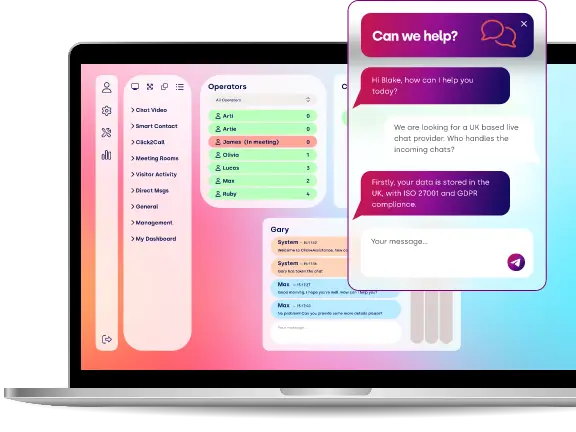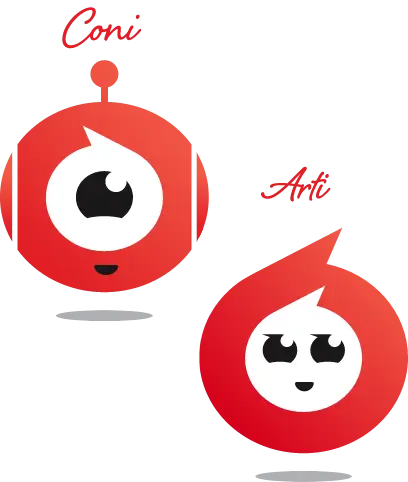Tech That Is Impacting The Supply Chain And Logistics Industry

The supply chain and logistics industry are benefiting from numerous innovations on the tech front, particularly chatbots that enhance customer service, deliveries, and warehouse management.
During 2020-2022, global supply chains endured extreme stress. East-west linkages broke down and prices soared as companies tried to manage inventories.
In the first half of 2023, things turned around as economic normality resumed. However, the pandemic-related disruption forced the sector to rethink how it operates wholesale. Rising consumer prices and inventory issues weren’t good for anyone, including many logistics firms that lost money.
In light of these developments, numerous supply chain and logistics industry players believe technology has the answer. Artificial intelligence (AI) chatbots could potentially mitigate disruption from COVID-19-style events, providing operators with advanced warnings.
This article explains the role of technology in the supply chain sector. It looks at existing technologies involving logistics chatbots, their benefits, and future developments that may improve productivity and further reduce risk.
Supply Chain & Logistics Market
The supply chain and logistics sector is being transformed by integrating AI and natural language processing (NLP) technologies into the most advanced chatbots. DHL found systems could achieve a handling rate of chat completion (without human intervention) of 68.9% – more than twice the industry average. Chatbots help firms streamline decision-making and improve customer interactions, providing additional qualitative benefits.
The reasons for this relate to recent technological advancements. Today’s NLP- and AI-driven chatbots don’t have the same constraints as their predecessors. Systems can integrate with other cutting-edge technologies, improving logistics performance further in external domains. These capabilities compound benefits, enabling firms to manage shocks better.
IoT Integration
Chatbots that integrate with internet-of-things (IoT) systems are one such innovation transforming logistics and supply chain operations. Companies can feed sensor data to central data repositories, permitting better tracking of stock levels, time-to-delivery, and product condition in real time.
Software development firm Acropolium is already experimenting with this technology. It recently improved its fleet management with seamless integration of over 1,000 IoT devices, including GPS. Truck drivers can discover unforeseen issues on the road with systems responding to changes in conditions and providing notifications via the cloud.
Voice Recognition
Chatbots are also being integrated with voice recognition solutions, an industry expected to grow 18.6% annually until 2027. This innovation eliminates the need for staff to use their hands while interacting with it, improving productivity and safety. For example, truck drivers can ask questions about delivery routes without releasing the wheel while warehouse staff can continue picking and packing as they make queries.
Speech-to-text conversion
Speech-to-text conversion also relates to this last point. Staff can use existing voice recognition technology to transcribe and convey information to other team members.
For example, workers could ask the chatbot something and send the text to a recipient, like a manager. The receiver could then answer the question in full with the chatbot reading aloud.
DB Schenker – an international logistics firm – already operates a system close to this. Its solution lets warehouse staff use chatbots to access real-time inventory data and confirm their pick lists. Employees can report defective goods, store information in the system for later analysis, and even improve IT support.
Big data
Integrating chatbots with big data is another exciting avenue the supply chain market is exploring. Already, 86% of logistics companies have vast information repositories for transportation management, with 63% implementing it in their warehouses to improve efficiency and capabilities. However, the range of applications could improve exponentially as firms discover more ways to use statistical data.
For example, chatbots integrating with big data can:
- Analyse contemporary and historical data to predict consumption patterns and trends
- Use past information to predict seasonal demand surges
- Identify pickers, packers, and drivers associated with warehouse shrinkage
- Find products with the highest demand at specific times of the year
- Look for situations where under or over-stocking is most likely to occur
Furthermore, the more big data chatbots digest, the more valuable and potent it becomes. Additional training can improve chatbot prediction accuracy, enabling more robust forecasts.
NLP and AI
Finally, chatbots equipped with NLP and AI are transforming logistics operations. Stakeholders can ask questions as if they were talking to a friend or a manager, and get helpful responses.
For example, NLP and AI-equipped chatbots can:
- Answer customer service questions displaying empathy and compassion (for example, apologising to customers for late deliveries)
- Tell supply chain firms when they are likely to receive a shipment
- Detect human intent (like the sort of resolution a customer asks about when they will receive their order)
- Understand the context of the conversation (like knowing the implications of a supply chain company that says it can’t meet an order by the deadline)
Maersk already has a chatbot in operation using NLP and AI. The company uses it to help with online registration, username and password management, container tracking, vessel and schedule information, and website error reporting. Chats can take place in English, Chinese, or Spanish, with live agents waiting in the wings as backup.
Benefits of Chatbots in Logistics and Transportation
The above discussion hinted at some of the benefits of chatbots in logistics and transportation, but this section spells them out explicitly. We look at why logistics and supply chain firms are investing so much money into them:
Real-Time Delivery Tracking
The most obvious benefit of chatbots on the customer side is real-time tracking. Individuals and client companies can follow their packages as they make their way to their respective destinations.
The most advanced chatbots integrate with GPS tagging. These systems let customers follow their shipments in real-time, showing their location on the road, in warehouses, or on the ocean.
Fleet And Staff Management
Chatbots also excel at fleet and staff management. Solutions can assign routes, schedule deliveries and tell individual drivers when to leave the depot.
Some firms use advanced AI with cameras and sensors to identify unsafe driving behaviours to alert fleet managers. These systems prevent drivers from being reckless or negligent in ways that could harm the brand.
Cost Reduction
Cost reduction is another benefit of chatbots in logistics and transportation. Estimates from across industries suggest using the technology could reduce costs by $7.3 billion – a massive boon.
Most of these cost reductions come from automating tasks, like responding to basic enquiries. However, it may also occur due to the substitution effect of transferring human representatives from rote tasks to value-added operations. For example, agents can provide more value in helping an angry customer with an in-depth issue than providing a happy customer with canned answers they could find online.
24/7 Customer Availability
24-hour availability is also a substantial benefit of chatbots. Customers can get information about their parcels whenever they want, without waiting for an agent to become available. Customers concerned about their deliveries at night and in different time zones can get answers fast. Buyers who prefer checking shipment statuses at the weekend can also benefit, eliminating the need to wait until the next business day.
Data collected by Master Of Code suggests that 73% of buyers expect websites to feature digital assistants for interactions. As such, there’s a strong case for all logistics firms to add them to their sites.
Multiplatform Support
Multiplatform support is another benefit of advanced chatbots. Systems can operate across various touchpoints, including social media and messaging services, allowing stakeholders to leverage them through their preferred channels.
Click4Assistance facilitates conversational marketing with its multiplatform support available via its chatbots and Live Chat service. Users can connect to bots or reps via websites, SMS, Whatsapp and Facebook Messenger (with more integrations on the way). The service reduces barriers to communication and ensures users and employees can use their preferred mediums.
Other tangible benefits of chatbots include:
- Managing orders – Answering user questions about product availability, delivery times, inventory levels (for internal use), and returns
- Tracking goods – Providing up-to-the-minute information on the physical whereabouts of goods
- Securing payment transactions – Assisting customers and clients through various payment gateways, including accepting payments and orders, reducing the need for drawn-out phone conversations
- Calculating delivery costs – Telling clients how much shipping will cost based on provided inputs
- Controlling schedules – Arranging delivery routes and timetables for truckers and other in-the-field operatives
- Optimising last-mile delivery – Providing up-to-date last-minute changes to delivery instructions over the final mile, including responding to traffic conditions and adjusting delivery method based on parcel size and weight
- Enhancing warehouse management – Using chatbots to create more streamlined pick routes, increasing accuracy and speed
Future of Supply Chain Chatbot Development:
While present supply chain technologies are impressive, more are coming down the pike, and they promise to be game-changing. Advancements in chatbot integration will unleash new capabilities like never before.
Multimodal interfaces combining voice, text, and visuals
One exciting development is in the realm of multi-modal interfaces. These combine voice, text, and visuals, helping the chatbot learn more about the user’s desires and intentions.
Interestingly, this trend has been active in the AI sector for some time. For example, ChatGPT learned to see, hear, and speak in September 2023, and Anthropic’s model followed suit in March 2024.
Combining these modalities gives AI systems more sense-related information to interpret their environment. Solutions that can physically see products on shelves can override inventory systems showing shortages, improving firms’ real-time stock management, for example.
Personalised chatbots considering individual preferences, history, and context
Personalised chatbots better able to consider individual preferences and history could also emerge. Already researchers are working on advanced AI memory mechanisms permitting systems to return to prior states, including leveraging context from previous chats. However, new systems could behave more like human virtual assistants, building relationships and rapport with users instead of treating each interaction as a one-shot event. This process could enhance customer loyalty and reduce frustration, encouraging repeat business.
Expanded integration with AI/ML, blockchain, and other technologies
Further integration with AI and machine learning (ML) is also likely. These could enable superior interpretation of shipment history, weather patterns and other market data to make more accurate predictions. Supply chain firms could foresee their requirements with more accuracy, reducing the risk of over- or under-stocking.
At the same time, integrating blockchain technology with chatbots could improve tracking precision. Instead of relying on simple barcode systems, supply chain firms could provide users with authenticated information on an immutable ledger, preventing tampering, fraud, and fake goods.
Industry-specific chatbots addressing unique requirements
Another emerging technology is industry-specific chatbots to address users’ unique requirements, including the logistics sector. These models might receive specific training on managing complex logistical operations, including multi-warehouse distribution or specialist shipments for highly-regulated industries, like healthcare. Chatbots could receive training on integrating the company’s existing workflows and best practices to friction and boost efficiency.
Rise of pre-built software solutions customised to needs
Along these lines, pre-built software solutions customised to supply chain firms’ requirements will also likely emerge. These offer faster deployment (because of baseline training) and greater relevance to target audiences. Chatbots can better drill down into customer issues when their knowledge and focus become more targeted. Brands can customise their solutions to meet users’ needs without investing in costly bespoke development.
Hybrid models combining human and chatbot interactions
The future could also see the emergence of hybrid human-chatbot interactions in supply chain contexts. Besides triage, chatbots could interact with other humans and AIs on logistics companies’ behalf, helping to manage deliveries and shipments better. Humans could then take conversations when chatbots can’t provide an answer or require executive decision-making to proceed.
Automation of financial transactions, from account management to payments
The automation of financial transactions is another capability likely coming to chatbots soon. AI will manage users’ accounts, processing payments and sending invoices.
The main business benefit of this will be reduced business errors. Companies will cut the risk of sending payment demands to customers who have already paid while reducing the risk of invoice queries (which slow payment receipts).
Ethical and policy considerations in AI supply chains
Finally, as chatbots become more capable, they will consider the ethical and policy ramifications of their decision-making. For example, solutions should be more transparent in their data collection algorithms and avoid bias. Bots must also use user information ethically for its original purposes. Conflicts of interest and unfair practices may emerge if they do not.
Developing proper policy frameworks around AI supply chains is essential for setting the rules for using data. This approach, in turn, improves compliance and reduces the risk of litigation or regulatory investigations.
Common Misconceptions:
Given the advances in chatbot technology, many business owners are worried about “chatbots gone wild".
Some supply chain managers think chatbots follow specific programming and control the information staff can access, preventing them from making effective decisions. Others think the bots are unreliable and can’t provide helpful answers to clients, staff and other stakeholders.
Fortunately, these fears are mostly unfounded. Business owners have complete control over chatbots and their interactions with third parties. Supply chain firms can train their chatbots to automate tasks better and become more reliable over time, with performance scaling with use.
Taking Control Of Chatbots
Logistics companies can take control of chatbots with effective policies. Most supply chain firms start by setting out what they want their chatbot to do. While AI is becoming more general-purpose, defining its role is helpful for operational purposes. For example, you might specify that your chatbot helps handle staff communications, deal with customer queries or plan picking routes.
Next, you want to monitor and update their chatbots regularly. Incorporating user feedback and new data can improve performance. Don’t treat chatbots as “set-and-forget” services. Getting the most out of them (and avoiding the pitfalls) requires attention.
Throughout this process, collect data from the data the chatbot generates and feed that into its decision-making. Current systems require you to guide this process, but future algorithms may be self-correcting or able to incorporate new information as it arises.
Lastly, ensure you match your chatbot’s tone to your brand. Ensuring it speaks with the company voice is one of the best ways to integrate it into your team. Defining conversation trees and workflows helps it shift customers, clients, and employees towards desirable end-points (such as resolutions to shipping issues or realistic insights into stock levels).
Conclusion
In summary, tech is disrupting the supply chain and logistics industry, enhancing most aspects of customer services and operations. Chatbots in particular are having an outsized impact, due to recent advances in AI and NLP. Supply chain firms are using them to save money, automate processes, manage staff, and provide 24/7 assistance to clients.
Incredibly, much of this technology is already available, adding billions in savings to the global economy annually. Companies can reduce costs dramatically while improving services.
Furthermore, these developments still have a long way to go. Chatbots could eventually act as intelligent virtual assistants for all stakeholders in the supply chain, providing them with timely information and forecasts to improve operations on the ground in real time, reducing errors, improving security, and enhancing productivity.

























